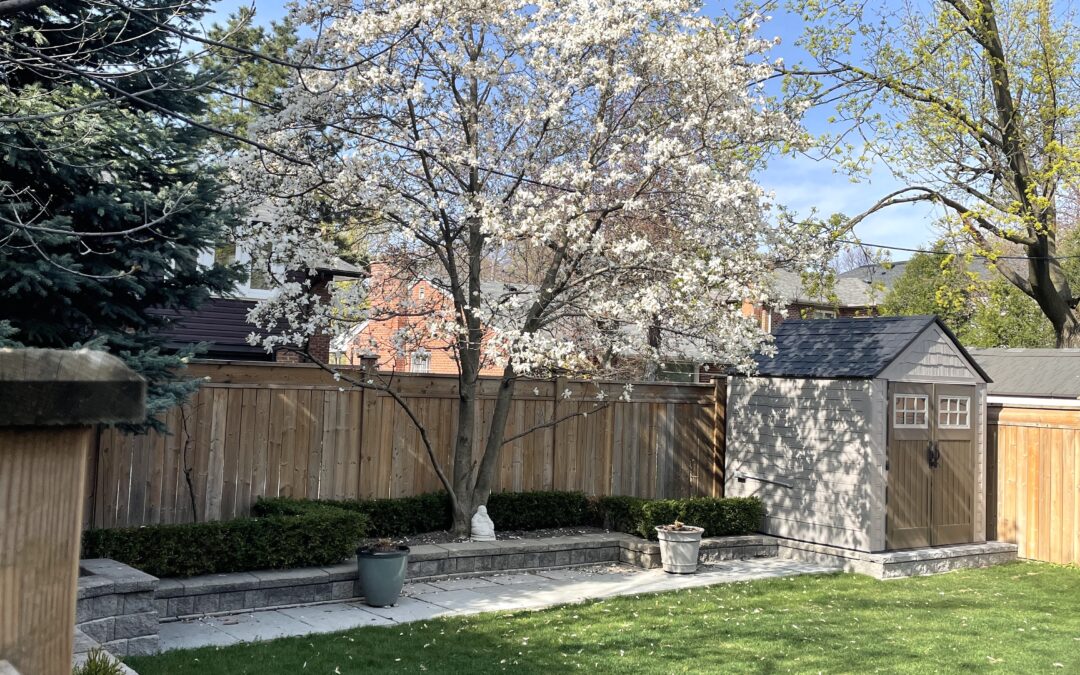Welcome to our beautiful white magnolia tree in full bloom! Today I’ll guide you through how to create your sacred space, within your home, within yourself and within your relationships; but firstly, what does sacred space actually mean?
A sacred space is essentially a place of comfort, safety, trust, clarity, love, joy and pleasure that we enter, within, without and with. Just like spring comes and everything re-awakens and blossoms, we too need to care for the soil of our soul and love. It is a space where we can purify and rejuvenate. It is a space of trust. It is a space that is working for us and with us. It is a space that we can always go to when something off happens in our life, so that we can settle into peace and into love, remembering the core of who we are. It is the place, which will support us during our hardships, and the place, which will inspire our creativity.
We create sacred spaces in various ways:
1) physically such as an altar or room in our house,
2) internally in the way we treat the temple of our body and tending to our emotional and spiritual needs, and
3) we also create sacred spaces with our partner, where we create a devoted sacred love life.
It is just as important to keep our physical spaces clean and beautifully decorated, as it is to keep our inner spaces peaceful and harmonized. We are not separate from the objects and people that we surround ourselves with, and energies overlap. How can we enter our own space? What needs to be cleansed? How can we make today more sacred? What does sacredness mean to us? Where do we spend most of our time and how does this place look like? How is it reflecting our inner state of being?
The way we treat the objects in our house is also a reflection of our relationships, to self and to others. The reality is that the places where we spend most of our time are extensions of our emotional, mental and spiritual worlds. By seeing what we prioritize, we also realize the parts of us that are prioritized; and by seeing what we neglect we also realize what parts of us we are neglecting. Rearranging and cleaning our homes is very beneficial and needed, especially when we desire to invite new energy to awaken, birth, and for new insights to emerge.
Our sacred space is also part of our sacred purpose, just like sacred relationships and sacred work are. In Shamanism, the sacred space is connected to the fire element as we use the transformational energy of fire for our wellness. This can be done both symbolically and literally.
To keep the spaces clean and clear, let go of what no longer serves you, with gratitude, always. Whatever was there in our life had its right place for its time being, whether it was in the form of belief system, thought pattern, clothes, shoes, scars and wounds, feelings and emotions, an omen or a vase for flowers – all were there for protection and nurturing. Trust in the knowing that what you need you will have in your path and don’t be afraid to de-clutter. Clean out the house and the mind, shed the stories that no longer serve you, so that you can make space for new energy to arrive.
The Physical Sacred Space
Most people like to dedicate an altar in their house, usually their bedrooms, for their sacred space. This is where they will place objects of emotional and spiritual resonance and importance for them, where they will pray and go to at least once a day; this is the place, which will ground them and remind them of their connection to spirit and their higher self. You may decorate it any way you like, that gives you pleasure and a peace of mind. It’s best to keep it clean, fresh and beautiful to keep its purity – and you can do that through fresh flowers, candles, aromas, icons and statues.
Remember that the purpose of this space isn’t about the objects, but rather it is to connect you deeper to your self and that this is the place you’ll go to in times of need, inspiration and love. Many people keep something really meaningful to them, such as an old photo or a charm from childhood, which remind them to the core of who they are and bring a loving memory to them, as this is usually the best way for grounding work also. In a way, our physical sacred space is also a reflection of how we honour ourselves and how we enter into wholeness and acceptance towards all else.
The Inner Sacred Space
Our body is our temple, so become a body of love rituals. How do you care for your body? How do you nurture and nourish your skin? How do you enter your body? How do you show respect, honour and kindness to your self and tend to your needs? Like we already discussed, our physical space is an extension to our inner space, so you can see which parts of you need more caring or what is your inner state of being by looking around your house and the way you care for it.
Our body is essentially a place and a space that we enter. Is it a place of tenderness? Is it a place of authority, surrender, pleasure, peace, discomfort or shame? How do you enter this space? What landscape do you find once you enter it – emotionally, mentally and spiritually?
No matter how beautiful our external space or body are, if we don’t feel peace and comfort within, it wouldn’t matter. The sacredness essentially means our own acceptance of the divine and holy within us. Just like the changing faces of God, reflected in life around us, there are many aspects of ourselves also and we are not concrete statues. And just because one day we feel a little “un-pretty” because of emotion or circumstance, doesn’t mean our face is not the same as it was yesterday when it smiled and laughed with love; we can’t reject this side of our face just because it is having a “bad” day, nor do we need to pressure it to tell us why. It is this acceptance of whole that is the essence of holy.
Can you trust yourself? What are your values? Do you respect yourself? How do you talk to yourself in the times of hardship – are you too self-critical? Do you accept and love your parts in times when things are not going the way you wanted them to? How do you honour yourself? Who do you allow in your sacred spaces? The more we love self, the more we’ll need to accept that anything and anyone that doesn’t lead us to more love may need to stay at a distance, at least for a while. And the answers to all questions in life are: grace, love, compassion and forgiveness. The common denominator: tenderness.
Our tenderness is a virtue that washes like water over us. It is sacred, and as such needs to be blessed – and to bless something means to protect it.
Creating a devoted sacred inner space is the basis of then inviting a beloved into our life and creating a devoted sacred love life together.
Sacred Space with a Partner: Creating a Devoted Sacred Love Life
This is the space we’ll enter with our partner where we will begin to create our love. In any relationship – there is I, there is you, and there is us. This us is the relationship. Soul-sized is the land of the heart and that’s the land that matters. There, when two people merge, a soul is born and grows, along its unique emotional wild lands. This soul is the relationship, which needs its own nurturing and protection, which too interweaves with all else.
The space we share with our partner is sacred because it is based on trust, acceptance, respect, loyalty, patience and temperance. It is a safe space where we can surrender ourselves and be fully present for one another. To go the distance with a partner, we need to be able to trust them with our life.
Presence is the ability to provide a safe space for our beloved to grow and thrive in their true essence, expression and being. Presence is about paying attention to our partner. It is about holding them and kissing them not in the way we always did, but in the way they need to right now. It is about re-discovering and re-exploring them no matter how many years we’ve been together. It is about providing a safe sense of containment where we will care for their wellbeing and nourishment because they are a part of us. And they will for us also.
In our sacred space that we’ll build together, is where we will come back to one another even in our times of hardship and misunderstandings; where we will have our little rituals and moments of re-connection, where we will be sharing openly, listening and holding intentional dialogues, so that we can move through life together, settling our relationship into peace.
We can think of it as the inside of our forearm. This place on our skin remains gentle and tender despite age, struggles and circumstance. It is an invitation to a meeting place, where our two worlds, no matter how seemingly different, can find a way to touch and kiss again. It’s a kiss on the wrist; an offering of ourselves and an honouring for them, with a kindness of rhythm and appreciation. When we kiss someone’s wrist, our lips touch the thinnest of their skin and we hear their heartbeat. It’s a promise that in their most vulnerable and fragile moments, we’ll hold them in tenderness and without judgement, and we’ll kiss their wrist instead of harming them or taking advantage of them in their weakest moment. Along the gentleness of the inside of the forearm, we can always trace ourselves back to that place, where we can find a way to re-connect by remembering our tenderness and our love.
Creating a safe sacred space allows us to be vulnerable, which is the first step to intimacy and deep long-lasting love. The more we accept ourselves with all of our flaws and insecurities, and the lonely, dark, abandoned corners within us, the more accepting we’ll be of others, which is why we needed to create our inner sacred space first.
Only then we’ll be able to hold space for someone else in our life; only then we’ll have the capacity to hold space for someone’s feelings and wounds, and be able to love our partner for who they truly are, rather than what we want them to be.
We need to provide the nurturing environment for an experience to happen. Imagine a rose. She doesn’t just fall from the sky. We need soil, seeds, sun, and water for life — all of which look and feel nothing like a rose. And yet, they are all needed to cultivate and nurture the environment in which the rose may bloom. And every rose will be different depending on how she grew and what she was offered.
In the same way, we need to create the nurturing environment for intimacy and vulnerability. We need to be compassionate, empathetic, kind, non-judgmental, noncritical, and trustworthy. All we are doing is just providing a space for an experience; allowing someone the freedom to open up to us and to be themselves truly. Whether they do or not — it is their choice. Love is just holding that space for someone and allowing them into it.
In an age of social media, apps, dehumanization and degradation of values, it is perhaps more important now than ever to keep our intimate bonds private and trustworthy. True love, just like devotion, is not based on expectations; we devote to another, we love another, not because of what they will give us but because this is who we are and this is how we feel. True love and devotion aren’t some high-minded idealistic notions far in the sky, they are found in our most ordinary day, in our most ordinary moments and gestures along the circling staircases of life. And when they find us, it is a non-negotiable and absolute extension of hand, that we do our best and we must be willing to take their hand, hold it, and treasure it. So love consciously. Take care of one another, protect one another, love wholly and truly.
For personal readings with me, you are welcome to browse through my Offerings.
Photography by me.

For more of my writings, browse through my Art of Love.
If you wish to support me and my work, you may do so by sharing it or donate here. For personal readings with me, you may visit my Offerings.
Your support means so much to me! Thank you wholeheartedly!




